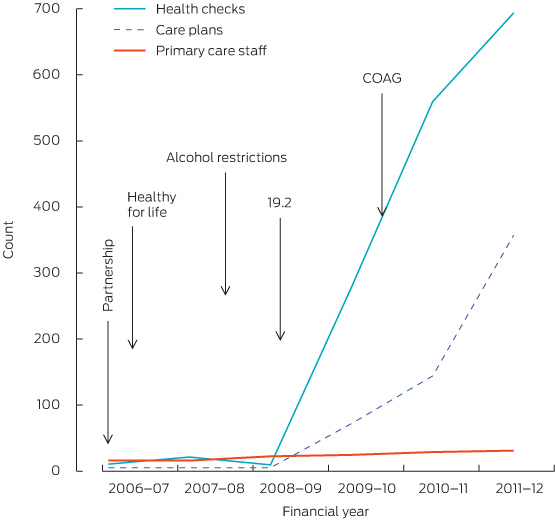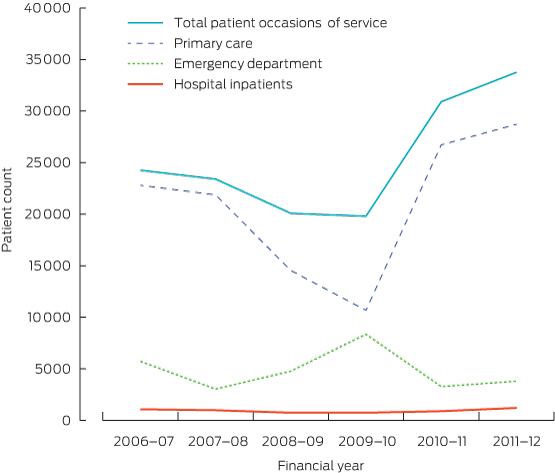Your AMA has been active on policy and in the media on a range of issues crucial to making our health system better. Below is a snapshot of recent media coverage.
Print/Online
Medics to fix ‘fear’ culture, The Daily Telegraph, 4 April 2015
A change in the way doctors and nurses report abuse is needed to buck the scourge of sexual harassment and protect whistleblowers within the medical industry. AMA President A/Professor Brian Owler was committed to bringing about cultural change within the profession.
$8.40 more to see doctor, Herald Sun, 7 April 2015
Patients could be paying up to $8.40 for a visit to the doctor by 2018, more than they would have paid under the GP co-payment. AMA President A/Professor Brian Owler said the lazy policy would mean fewer patients would be offered bulk-billing.
Religious belief saw mum and baby die, The Daily Telegraph, 8 April 2015
The AMA has defended doctors at a top Sydney hospital forced to let a heavily pregnant woman and her unborn child die after the mother refused a blood transfusion because she was a Jehovah’s Witness. AMA Vice President Dr Stephen Parnis said doctors could not force a patient to accept treatment.
Not in the script – chemists selling your data, Sunday Mail Adelaide, 12 April 2015
Some chemists are selling their patients’ prescription information to a global health information company, which sells it on to drug firms, trying to boost their sales. AMA Chair of General Practice Dr Brian Morton called it an amazing invasion of privacy for purely commercial reasons.
Coalition’s ‘no jab, no pay’ policy ties benefits to immunisation, Australian Financial Review, 13 April 2015
Australian parents will lose thousands of dollars’ worth of childcare and welfare benefits if they refuse to vaccinate their children. AMA President A/Professor Brian Owler said the AMA backed the plan and said vaccination remained one of the most effective public health measures that we have.
Hospitals ‘storm’ warning, Adelaide Advertiser, 16 April 2015
The number of public hospital beds across Australia has fallen by more than 200 and no State has met emergency department targets. AMA President A/Professor Brian Owler said hospital performance benchmarks are not being met and things will only get worse as funding declines.
AMA hospital report card gives states fuel for fight, The Australian, 16 April 2015
Tony Abbott will face heightened pressure to reverse cuts of $80 billion to health and education, with a snapshot of public hospital performance handing the states fresh ammunition to press home their case. AMA President A/Professor Brian Owler will use the report to warn the Government that its extreme public hospital cuts are unjustified.
Church no longer exempt for jabs, Hobart Mercury, 20 April 2015
A religious exemption loophole, that allowed parents who opposed vaccinations to continue to receive childcare and family tax payments has been scrapped. AMA President A/Professor Brian Owler praised the move.
AMA warns against continued freeze on rebates, ABC News, 22 April 2015
AMA President A/Professor Brian Owler said at a time when the Government should be increasing its investment in general practice, the Medicare rebate freeze will eat away at the viability of individual practices.
Rape row over new anti-jab campaign, Adelaide Advertiser, 23 April 2015
A Facebook graphic on the Australian Vaccination Network site that compares vaccination to rape has been condemned by doctors, the Rape Crisis Centre, and politicians as abhorrent and insulting. AMA President A/Professor Brian Owler said the post undermines the organisation and shows lack of intelligence and common sense.
Doctors back review of Medicare rebates, West Australian, 23 April 2015
Doctors have backed a sweeping review of the Medicare Benefits Schedule, but warned the Federal Government not use it as an excuse to cut patient services. AMA President A/Professor Brian Owler agreed the MBS was outdated and said any savings from the review should be reinvested into the health system.
Aussie in sick new IS video, Sunday Herald Sun, 26 March 2015
The shocking new public face of Islamic State death cult is an Australian doctor. AMA President A/Professor Brian Owler said he was appalled that any medical professional would want to work for terrorists.
Transparency on dug company payments and trips a step closer, The Age, 28 April 2015
Patients will find out what payments and educational trips their doctors have received from drug companies. AMA Chair of General Practice Dr Brian Morton said it was insulting and naïve to suggest doctors would be unduly influenced by a free meal.
Terror doctor free to practise, Adelaide Advertiser, 28 April 2015
The Medical Board is refusing to deregister the former Adelaide doctor who left Australia to join the Islamic State terrorist group. AMA Vice President Dr Stephen Parnis said he expected the Medical Board to look closely at the case from legal and professional standards perspectives.
Scientists call for action on disease risks from climate change, Sydney Morning Herald, 30 April 2015
The Australian Academy of Science has released a report which shows a range of tropical diseases becoming more widespread in Australia due to climate change. AMA President A/Professor Brian Owler said the report should be a catalyst for the Abbott government to show leadership on reducing greenhouse gas emissions and mitigating their effects on health.
Radio
A/Professor Brian Owler, 774 ABC Melbourne, 7 April 2015
AMA President A/Professor Brian Owler talked about the decision to axe the proposed $5 Medicare co-payment in favour of an alternative Government plan to freeze the amount received by doctors in rebates.
Dr Stephen Parnis, 6PR Perth, 13 April 2015
AMA Vice President Dr Stephen Parnis discussed the use of the welfare system to boost immunisation rates. Dr Parnis said in the 1990s the Howard Government also linked immunisation to social security, which resulted in a big increase in vaccination rates.
A/Professor Brian Owler, Radio National, 16 April 2015
AMA President A/Professor Brian Owler discussed Federal funding for health. A/Professor Owler said the health system has never been adequately funded and doctors and nurses have done well to meet a rise in demand.
A/Professor Brian Owler, 2SM Radio, 16 April 2015
AMA President A/Professor Brian Owler talked about the use of paw paw for chronic back pain. A/Professor Owler said paw paw is a well-known treatment, but that people do not tend to use it as much nowadays.
A/Professor Brian Owler, 4BC Brisbane, 16 April 2015
AMA President A/Professor Brian Owler talked about the issue of health funding and the AMA Public Hospital Report Card. A/Professor Owler said the issue is capacity and resources, and that he is concerned about the future given reduced Commonwealth funding.
Dr Stephen Parnis, 2GB Sydney, 23 April 2015
AMA Vice President Dr Stephen Parnis talked about the recent Facebook post from the Australian Vaccination Skeptics Network, which compares forced vaccination to rape. Dr Parnis said the campaign shows how disgraceful and unhinged some anti-vaccination campaigners are.
A/Professor Brian Owler, 2UE Sydney, 28 April 2015
AMA President A/Professor Brian Owler talked about the Medical Board’s handling of the case of an Australian-registered doctor who has joined Islamic State. A/Professor Owler said he understands the Medical Board is working with security agencies to ensure that the public is safe, and to prevent any possibility of Dr Kamleh returning to Australia to continue practising medicine.
A/Professor Brian Owler, ABC NewsRadio, 30 April 2015
The Australian Academy of Science is warning of the impacts of global warming predicting food and water shortages, along with extreme weather events. AMA President A/Professor Brian Owler said climate change has been a political battleground and that Australia is not ready to cope with its impacts.
Television
A/Professor Brian Owler, Channel 9, 16 April 2015
AMA President A/Professor Brian Owler talked about the AMA’s Public Hospital Report Card. A/Professor Owler said many hospitals are not reaching targets in the emergency department treatment and elective surgery wait times.
Dr Stephen Parnis, Channel 9, 12 April 2015
AMA Vice President Dr Stephen Parnis talked about the Government’s announcement that childcare rebate payments will be cut for families who do not vaccinate their children. Dr Parnis said the children involved are innocent, and their futures need to be insured.
A/Professor Brian Owler, ABC News 24, 16 April 2015
AMA President A/Professor Brian Owler discussed the crisis in Australia’s public hospitals as Commonwealth funding is wound back. A/Professor Owler said the Commonwealth are not living up to their responsibilities to fund States and Territories properly to run hospitals.
A/Professor Brian Owler, Channel 9, 22 April 2015
AMA President A/Professor Brian Owler discussed welcoming the plans for a major review of the Medicare Benefits Schedule. A/Professor Owler said the review is clinician-led and is not just about finding savings.
A/Professor Brian Owler, Sky News, 29 April 2015
AMA President A/Professor Brian Owler discussed the future of the public hospital system if Federal Government cuts come into effect. A/Professor Owler said state governments lack the capacity to increase revenue to pick up the slack.
A/Professor Brian Owler, ABC News 24, 30 April 2015
AMA President A/Professor Brian Owler called on the Federal Government to show leadership on climate change or risk the health of Australians. A/Professor Owler said there was overwhelming scientific consensus that the climate is changing and there will be consequences for health.

 more_vert
more_vert
